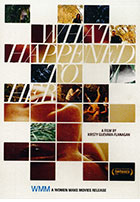
What Happened to Her 2016
Distributed by Women Make Movies, 115 W. 29th Street, Suite 1200,New York, NY, 10001; 212-925-0606
Produced by Kristy Guevara-Flanagan
Directed by Kristy Guevara-Flanagan
DVD , color, 15 min.
College - General Adult
Sexism, Television Industry
Date Entered: 05/29/2018
Reviewed by Sophie M. Forrester, Reed Library, State University of New York at FredoniaAlthough What Happened to Her was created in 2016, it seems built for the present moment in Hollywood history. In the wake of the Time’s Up movement, the film is a reminder that sexual abuse and harassment are not the entertainment industry’s only manifestations of sexism.
Narrator Danyi Deats describes several uncomfortable, and yes, abusive experiences during her time playing dead bodies on crime shows. (A quick IMDb search reveals that she’s since made a new career producing music videos for the likes of Sting and Beyoncé.) And while she makes only one accusation of outright sexual abuse, against a “touchy-feely” makeup artist, she does underscore the constant sexual undertone of her work, which forces her to be uncomfortably nude while surrounded by male crew.
But the film is not concerned exclusively with sexual violation; Deats’ stories of being manipulated into otherwise physically and emotionally uncomfortable situations reflects the television industry’s larger problem of violating women’s agency. Deats never appears on screen: rather, her narration is accompanied by clips of TV shows ranging from Twin Peaks to The Mentalist that align disconcertingly well with her experiences. In so doing, the film effectively demonstrates the widespread nature of the problems Deats describes.
What Happened to Her does not include a sociological critique of “our cultural obsession with images of the dead woman on screen,” as its promotional description suggests. However, it does reveal, through one woman’s experiences, the ways in which the entertainment industry harms its female workers, including harms beyond sexual abuse – a rare but important topic of discussion. It is recommended for academic libraries seeking films on sexism or the television industry.